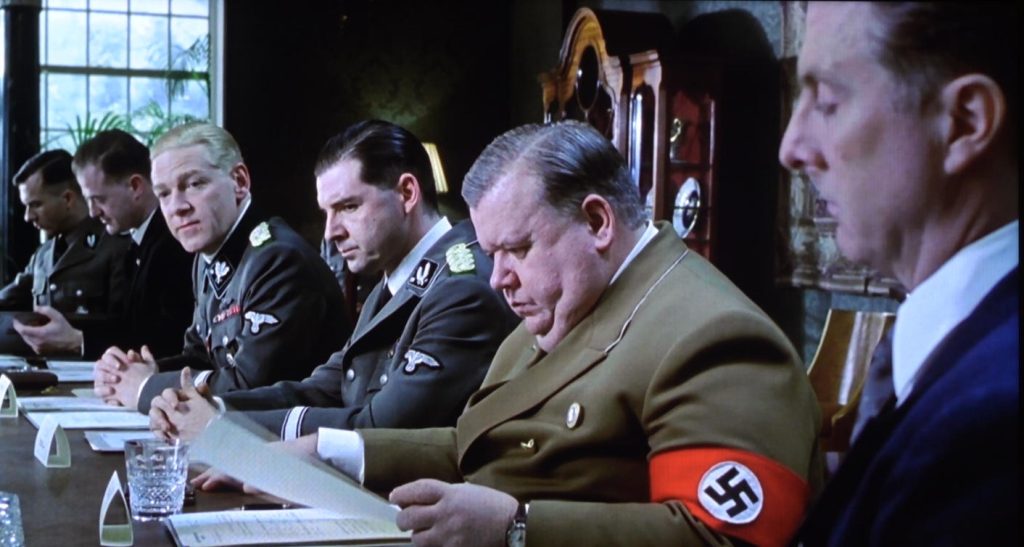“The Man Who Wasn’t There” (2001): Navigating the Shades of Noir – Film Review

In the landscape of early 21st-century cinema, “The Man Who Wasn’t There” emerges as a meticulously crafted homage to the film noir genre, courtesy of the visionary Coen Brothers, Joel and Ethan Coen. Released in 2001, this cinematic endeavor delves into the life of Ed Crane (played by Billy Bob Thornton), a taciturn barber caught in the web of his own existential ennui and the cascading consequences of his actions. Through a detailed examination of its narrative, performances, and stylistic elements, alongside insights into its creation, this review endeavors to unpack the layers of this enigmatic film.
Crafting a Neo-Noir Masterpiece
At its core, “The Man Who Wasn’t There” is a narrative steeped in the traditions of noir, replete with a disillusioned protagonist, a convoluted plot involving crime and punishment, and an exploration of fate and existential dread. However, the Coen Brothers infuse the film with their unique brand of storytelling, blending dark humor with profound philosophical musings. The screenplay, penned by the Coens, is a labyrinthine tale that meticulously weaves the mundane life of Ed Crane with the extraordinary circumstances he finds himself in, following a decision to blackmail his wife’s employer.
The film’s narrative is propelled by Ed’s voiceover, a staple of the noir genre, which offers insight into his internal world—a world marked by detachment and a quest for meaning in a seemingly indifferent universe. This narrative device serves as a bridge between the audience and Ed’s stoic exterior, revealing the depth of his contemplation and the complexity of his moral compass.
The Aesthetic: A Visual Homage to Classic Noir
“The Man Who Wasn’t There” is a visual feast, shot in striking black and white by cinematographer Roger Deakins, a frequent collaborator of the Coen Brothers. This choice not only pays tribute to the film noir era but also accentuates the themes of duality and the murky moral landscape Ed navigates. Deakins’ use of light and shadow masterfully creates a sense of tension and foreboding, encapsulating the existential weight of the narrative.
The meticulous attention to period detail in the production design and costume design further immerses the audience in the post-war American setting, a time of both optimism and underlying anxiety. This backdrop serves as a perfect canvas for the film’s exploration of the American Dream and the disillusionment that often accompanies its pursuit.
Performance: Billy Bob Thornton’s Understated Brilliance
Billy Bob Thornton’s portrayal of Ed Crane is a masterclass in restraint and subtlety. Thornton’s performance captures the essence of a man who is both a participant in and observer of his life, seemingly adrift in the currents of fate. His interactions with the ensemble cast, including Frances McDormand, James Gandolfini, and Scarlett Johansson, are imbued with a sense of depth and complexity, highlighting the intricacies of human relationships and the often-unseen forces that shape them.
The supporting cast delivers equally compelling performances, with McDormand’s portrayal of Ed’s wife, Doris, offering a poignant counterpoint to Ed’s introspection. Gandolfini and Johansson add layers to the narrative, representing the conflicting ideals and desires that drive the characters towards their inevitable destinies.
Behind the Scenes: The Making of a Neo-Noir Classic
The creation of “The Man Who Wasn’t There” is a testament to the Coen Brothers’ vision and their ability to harness the talents of their collaborators. Roger Deakins’ cinematography was achieved through a meticulous process that involved shooting on color film stock and then converting the footage to black and white, ensuring that the tonal quality and depth of the noir aesthetic were preserved.
The film’s score, composed by Carter Burwell, plays a crucial role in evoking the mood and atmosphere of the era. Burwell’s compositions, ranging from haunting piano melodies to jazz-infused pieces, complement the film’s visual style and thematic depth, enriching the overall viewing experience.
Reflections on “The Man Who Wasn’t There”
“The Man Who Wasn’t There” stands as a profound exploration of existential themes, wrapped in the guise of a noir thriller. The Coen Brothers have crafted a film that is both a homage to and a reinvention of the genre, offering a narrative that is as intellectually stimulating as it is visually arresting. Through its complex characters, intricate plot, and stylistic brilliance, the film invites viewers to ponder the existential questions that lie at the heart of the human experience.
In delving into the behind-the-scenes efforts and the collaborative genius that brought this film to life, one gains an appreciation for the artistry and craftsmanship that define the Coen Brothers’ oeuvre. “The Man Who Wasn’t There” is not just a film; it is a cinematic meditation on the nature of existence, identity, and the search for meaning in an ambiguous world. Through its masterful execution and timeless themes, the film secures its place in the pantheon of cinematic classics, inviting audiences to explore the shadows and nuances of the noir landscape anew.




